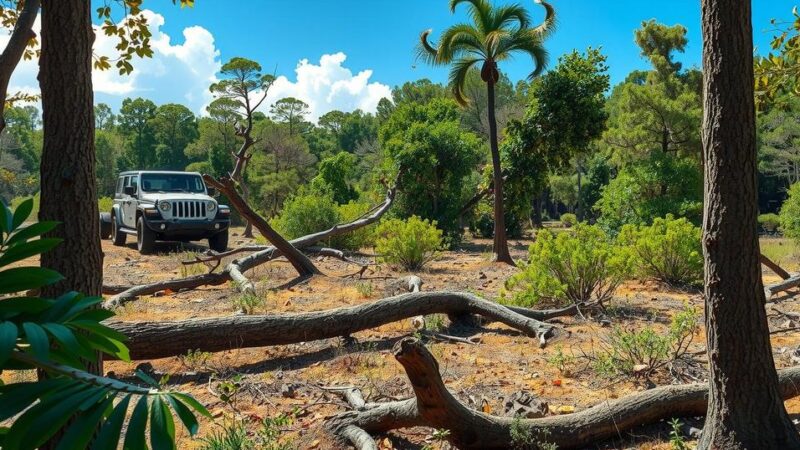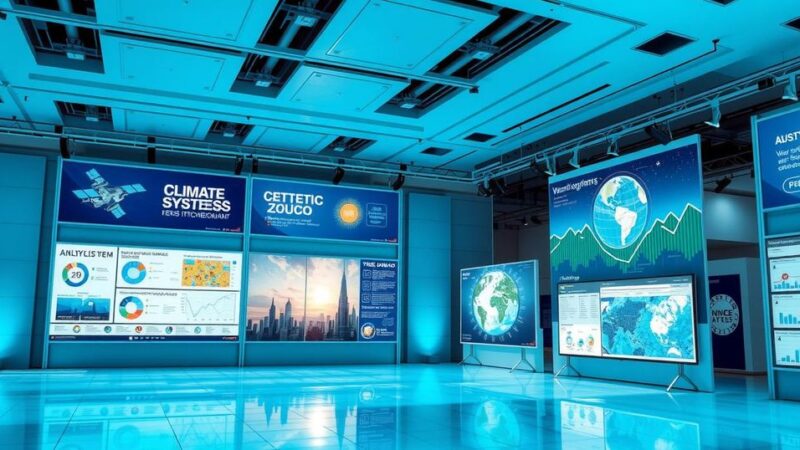March celebrates International Women’s Month, highlighting the significant contributions of women in combating climate change. The UN Environment Program emphasizes the urgent need for emission reductions to limit global warming, citing that a 42 percent reduction is necessary by 2030. Key figures, including UNEP’s Inger Andersen, are recognized as Trailblazing Women in Climate, leading efforts for sustainability and advocating for social equality.
March is International Women’s Month, providing an opportunity to highlight women who are actively engaged in improving environmental safety and sustainability. The UN Environment Program (UNEP) has raised alarms over the slow pace of climate action, emphasizing the need for immediate steps to address climate change, biodiversity loss, and pollution.
UNEP’s Emissions Gap Report 2024 underscored the necessity for countries to reduce emissions by 42 percent by 2030, aiming to limit global warming to 1.5°C as stipulated in the Paris Agreement. The dire implications of failure to meet this goal have been noted with urgency.
Inger Andersen, UNEP Executive Director, remarked on the escalating temperatures, vanishing ecosystems, and ongoing pollution challenges: “Temperatures are rising, ecosystems are disappearing, and pollution remains a deadly threat. These are global problems that require global solutions. The world must pull together to build a fairer, more sustainable planet.” Andersen is featured in the Reuters Events Trailblazing Women in Climate List, which celebrates women from various sectors contributing to climate efforts.
This year’s list includes eminent figures such as Mafalda Duarte of the Green Climate Fund and Eliane Ubalijoro of the Center for International Forestry Research. Other notable individuals include Mary Robinson, former President of Ireland; Rhian-Mari Thomas of the Green Finance Institute; and Melina Laboucan-Massimo, who supports Indigenous communities in Canada with solar energy projects.
Andersen emphasized the crucial role of women in tackling climate-related challenges: “There is no debating that women — along with many other vulnerable groups — bear the brunt of climate change impacts across the world… Yet the gender inequality gap continues to slow progress when we have no time to waste.” Women continue to build on the legacy of environmental leaders like Wangari Maathai, working tirelessly for ecological preservation and women’s rights.
Emerging youth activists also contribute significantly to the climate movement. Sophia Kianni and Greta Thunberg have mobilized global attention towards climate education and action. Vanessa Nakate advocates for African climate activism through her Rise Up Movement, while 17-year-old Leila McLeod has raised her voice in South Africa’s climate protests.
Local youth activists, like Javea Estavillo from the Philippines, are also making waves. Estavillo represented her country at COP28, bringing attention to the importance of climate financing. Additionally, sisters Ann and Billie Dumaliang co-founded Masungi Georeserve, championing land conservation against illegal activities.
These dedicated individuals persist in their fight for a sustainable environment and deserve robust support. Their efforts, critical for future generations, highlight the interconnectedness of climate action and global cooperation. Andersen reminds us: “collaboration across borders and across our differences is the only option to protect the foundation of humanity’s existence — Planet Earth.”
In conclusion, the month of March serves as a reminder of the invaluable contributions of women in the realm of climate action. The UN Environment Program has underscored the urgent need for emission reductions to avert disastrous climate outcomes. Women like Inger Andersen and many others are not only advocating for immediate action but also spearheading innovative solutions. The call for global collaboration is more pressing than ever to safeguard the environment for future generations.
Original Source: www.manilatimes.net






